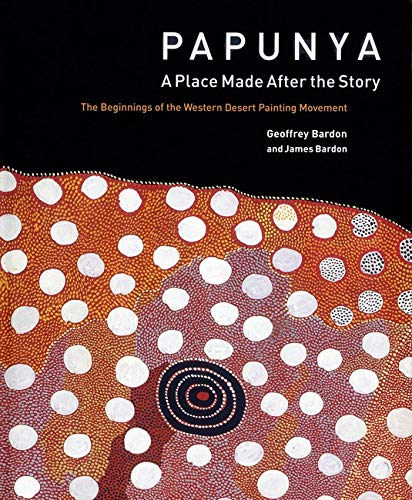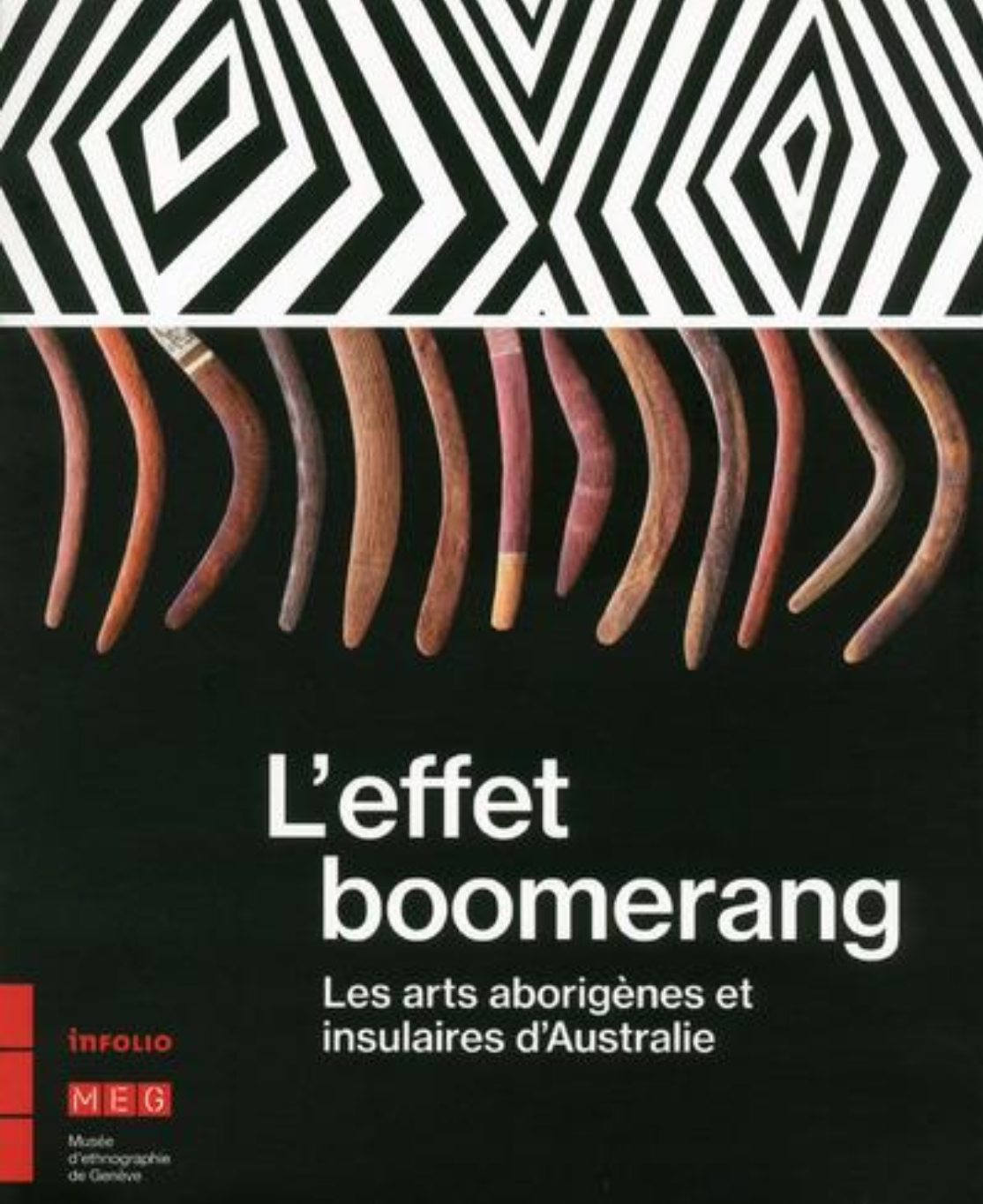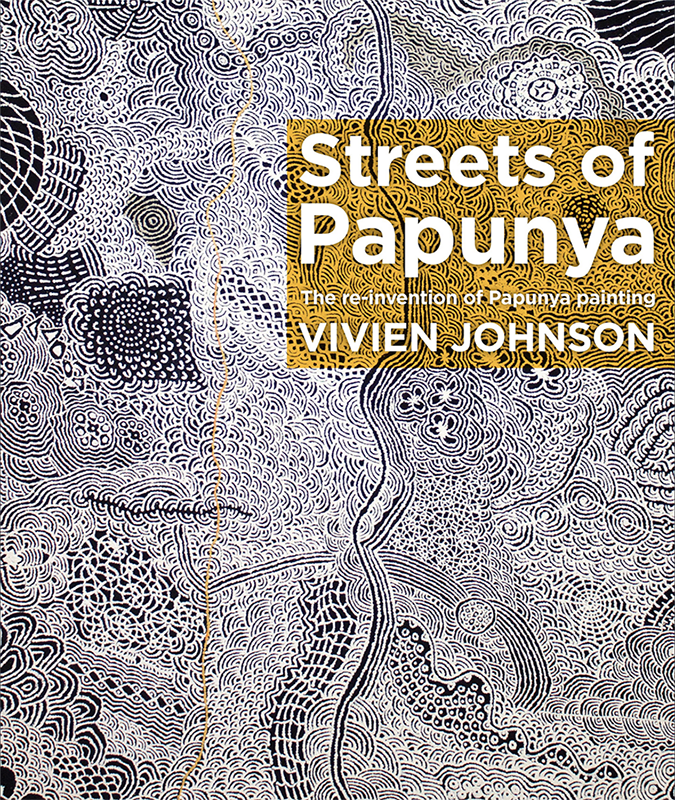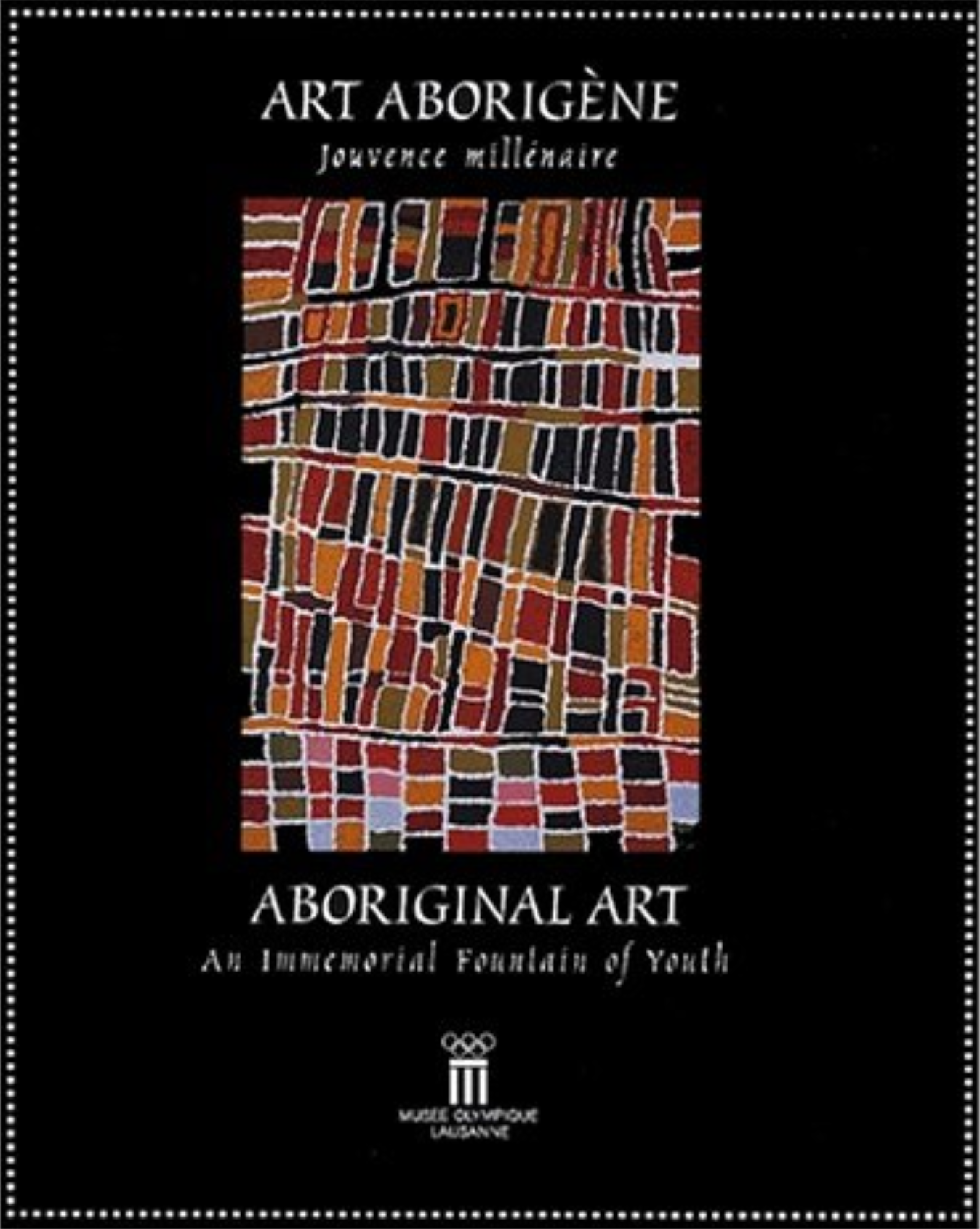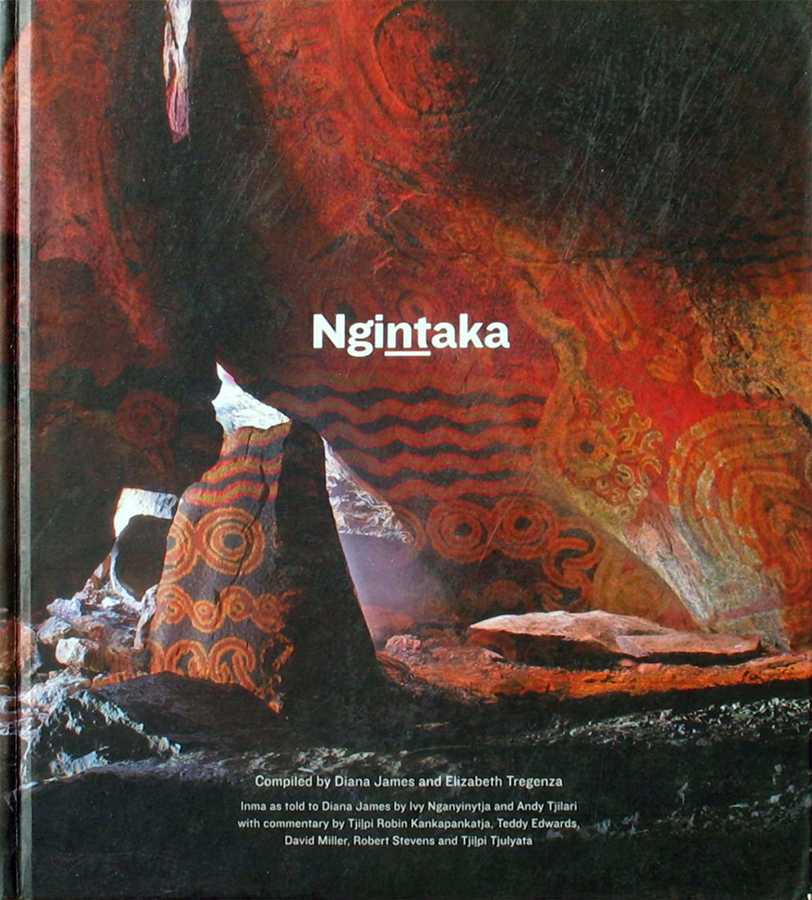Les œuvres disponibles dans nos galeries d’art
Livres d’Art Aborigène d’Australie:
THALI – Art Contemporain Aborigène/Contemporary Aboriginal Art – Beau Livre
192 pages, 130 illustrations – 38 € – Relié sous jaquette
- Edition bilingue français-anglais
- Marc Yvonnou, Nicolas Andrin
- Jean-Jacques de Dardel (Préfacier)
- Auteur(s) : Yvonnou Marc – Andrin Nicolas
- Isbn : 978-2-7572-0584-6
- Editeur : Somogy Éditions D’art
- Parution : 06/10/2012
- Nombre de pages : 192
- Dimensions : 28.8 x 25.5 x 2
Résumé :
Quand on parle de l’Australie, il faut abolir nos idées du temps et de l’espace. L’Australie est un pays continent aussi grand que l’Europe et son histoire, ou plus exactement celle des Aborigènes, remonterait jusqu’à 70 000 ans selon de récentes recherches. Le nom « Aborigène » a été choisi pour nommer des gens qui s’appellent en fait Warlpiri, Pintupi, jaru, Gija (Kitja), Walmajarri, Anmatyerre (Yanmatyerre), Aranda (Arrente), Yolngu, … différents groupes linguistiques dont le lien est une croyance commune en ce que les blancs traduisent par le Rêve (Dreaming) et Temps du Rêve : notion capitale dont va dépendre toute la vie cultuelle mais aussi la vie sociale. Le Rêve est à l’origine du monde, il est la Loi immuable. L’art aborigène découle de cette notion de Rêve. Elle fonde la puissance de ses peintures, constituées de symboles transmis depuis la nuit des temps (mais pouvant être réactualisés par l’intermédiaire de signes reçus par l’initié). Ces symboles sont des signes de pouvoir, signes du pouvoir des Ancêtres qui, au temps du Rêve, créèrent la vie sur terre et dont la présence spirituelle est toujours active sur des sites sacrés. Pour maintenir le lien avec son Ancêtre, son Rêve, l’initié doit régulièrement réaliser des cérémonies où la production d’objets est nécessaire. La mémoire de ce peuple, des événements les plus reculés, des épisodes du Temps du Rêve à l’histoire récente, nous sont ainsi parvenus à travers l’art. Les gens, qui découvrent pour la première fois la peinture aborigène, peuvent être décontenancés. Il n’y a pas de repères pour lire l’oeuvre ou tout au moins le vocabulaire utilisé n’est pas celui que l’on trouve dans l’art occidental. Ces peintures sont des oeuvres d’art, mais sont aussi les témoins d’une culture et du lien qu’entretiennent les Aborigènes entre eux, avec la terre, avec les animaux et les plantes. Pour eux, tout est lié, tout est interconnecté via le sacré, le Rêve. Ces toiles évoquent autant la richesse physique que la richesse spirituelle. Mais ces compositions sont bien plus . bien qu’allégoriques et religieuses, elles sont aussi la résultante d’un choix conscient et réfléchi sur la meilleure façon d’exprimer les connaissances. En 1971, presque par accident, va naître le mouvement pictural aborigène dans le centre de l’Australie : Papunya, un centre de peuplement où l’on vient de concentrer des Aborigènes de différents groupes linguistiques, va ouvrir la voie à toutes les autres communautés. Dans le désert, la densité de la population est très faible mais les gens se mettent à la peinture partout. Pourtant les vrais artistes restent rares. Ces derniers se sont tournés souvent vers un style personnel, s’éloignant peu à peu de la stricte orthodoxie, des schémas traditionnels. Il est souhaitable qu’un jour prochain, le nom de ses artistes géniaux, soit reconnu en dehors du contexte dans lequel cet art a été et est produit. Pour autant, faut-il être chrétien pour apprécier le plafond de la Chapelle Sixtine ? Laissons nous séduire.
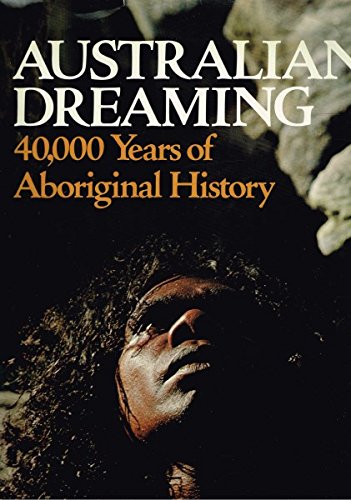
Australian Dreaming: 40, 000 Years of Aboriginal History
Australian Dreaming is the first Aboriginal history of the Australian continent and its people, as told by Aboriginal storytellers. It recounts epic travels of the Great Spirit Ancestors and tells how they created the animals and plants and gave birth to the earliest people of this land.
- Publisher : Ure Smith Pty.Ltd (January 1, 1996)
- Language: : English
- Hardcover : 304 pages
- ISBN-10 : 0725408847
- ISBN-13 : 978-0725408848
- Item Weight : 10.4 ounces
Papunya: A Place Made After the Story: the Beginnings of the Western Desert Painting Movement
- Éditeur : Lund Humphries Publishers Ltd (15 août 2006)
- Langue : : Anglais
- Relié : 552 pages
- ISBN-10 : 0853319472
- ISBN-13 : 978-0853319474
- Poids de l’article : 2.99 kg
- Dimensions : 24.51 x 4.57 x 30 cm
Revue de presse
‘This book is a kind of bible of Aboriginal art. It is grandiose in scale, defining in its pictorial record and rich in narrative momentum.’ The Age ‘…recommended for all libraries because of its important contribution to the understanding of art, culture, and modern history as well as because of its stunning visual presentation.’ Library Journal –James Bardon
Biographie de l’auteur
Geoffrey Bardon studied law and art education. In 1971, he took up a posting to Papunya in the Northern Territory, Australia. He worked closely with the Aboriginal painters who became the founders of the Papunya Tula painting movement during 1971 to 1973, and devoted many years after this to documenting and promoting the Aboriginal art he so admired. He died in 2003. His brother James helped realise this, Geoffrey’s last book.
DESERT COUNTRY
Desert Country showcases the finest examples of Aboriginal art from the Art Gallery of South Australia’s collection. It features the Gallery’s superb holdings of Western Desert painting, including pivotal works by leading artists of the movement from 1971 to the present; as well as documenting the remarkable recent development in Aboriginal art in the Anangu Pitjantjatjara Yankyuntjajara Lands of far northwest South Australia. The works are rich in story and arresting for their innovation, freshness and sumptuous colour.
Desert Country reveals the extraordinary development of the Australian desert painting movement and the flourishing cross-cultural relationships between Aboriginal artists working in the desert regions of South Australia, Western Australia and the Northern Territory.
Through 100 dynamic paintings, Desert Country showcases the enormous diversity of desert art, from the exquisite watercolours of Albert Namatjira, to the ground-breaking canvases of the Papunya Tula artists, and the latest stunning works to emerge from the APY Lands.
Among the highlights are the profoundly powerful works by Pitjantjatjara artists, mapping the devastated lands which they were forced to vacate during the atomic bomb and rocket testing of the 1950s.
All the works on display in Desert Country are drawn entirely from the extensive holdings of Aboriginal art from the Art Gallery of South Australia. More than a third of the paintings are new acquisitions which are being shown for the first time publicly.
The Desert Country exhibition continues the Art Gallery of South Australia’s pioneering tradition in the area of Indigenous art. The Gallery was the first cultural institution to purchase a work by an Indigenous artist (Albert Namatjira in 1939) and in 1981, became the first to start collecting western desert ‘dot’ painting.
Art Gallery of South Australia Director Nick Mitzevich says “Without a doubt, desert painting is Australia’s single most significant contribution to the art world and it deserves to be celebrated. I am very proud that the Art Gallery of South Australia is continuing to lead the way in the promotion of Aboriginal art, by being the first to document the rise of the desert art movement.”
Nici Cumpston, the curator of the exhibition, hopes that beyond its artistic goals, the exhibition will also be a step forward to improved race relations with the wider Australian community. “Desert Country allows us into an ancient existence and to witness history through the contemporary art of the oldest living culture in the world. Taking the time to learn the stories behind the paintings is one of the ways that enables us all to understand this culture and to enhance our respect for it”, she says.
ISBN: 9781921668043
Territoire du rêve – Art aborigène contemporain
Art aborigène contemporain – Editions Arteos – Ouvrage relié – 283 pages – Textes en Bilingue Français / English – Publié en 2017
L’art aborigène contemporain trouve ses origines dans la plus ancienne culture continue du monde. Territoire du Rêve offre un panorama de cet art depuis les débuts du mouvement artistique contemporain né au début des années 1970 jusqu’à certaines de ses évolutions les plus récentes qui font écho à des problèmes aussi actuels que l’identité culturelle et l’écologie.
Catalogue de l’exposition Territoire du rêve – Art aborigène contemporain, présentée à la Fondation Pierre Arnaud à Lens, Suisse (1er décembre 2017 – 20 mai 2018).
Le livre est une introduction approfondie et fervente à l’art des premiers habitants d’un grand nombre de régions isolées d’Australie.Il rend compte des cultures et des systèmes de croyances sur lesquels est basée la pratique de l’art aborigène contemporain. Ouvrage de référence, Territoire du Rêve, réunit les textes des spécialistes les plus éminents de l’art indigène australien.
Il est abondamment illustré par les oeuvres de la Collection Bérengère Primat, une des principales collections d’art contemporain aborigène et insulaire australien en Europe.Cette publication a pour ambition de faire découvrir l’art aborigène contemporain dans toute sa splendeur et son intensité à un large public. Ce catalogue rassemble des textes des plus importants spécialistes de l’art aborigène tels que Wally Caruana, John Kean, Howard Morphy, Georges Petitjean et Sally Butler.
- Référence: 9791096854011
- Auteur(s): Bérangère Primat, Georges Petitjean, Wally Caruana, Howard Morphy
- Editeur(s): Arteos
- Nb. de pages: 283
- Langue: Bilingue Français / English
- Dimensions: 270 x 230
- Date parution: 2017
- Musée: Fondation Pierre Arnaud, Lens (Suisse)
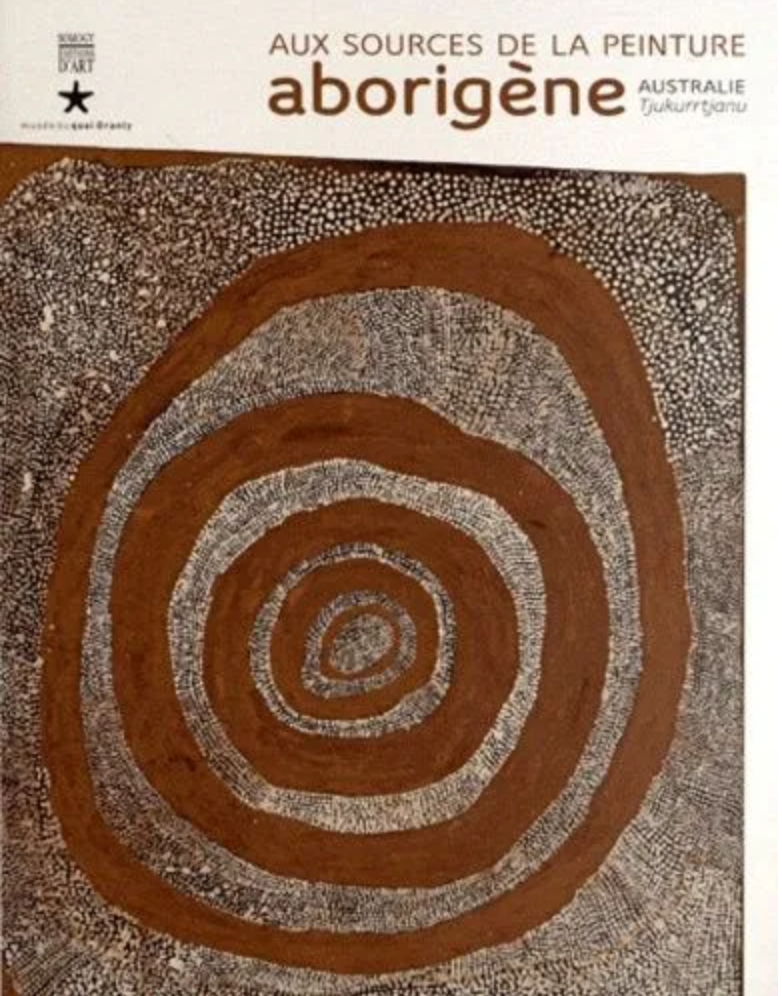
Catalogue d’exposition Aux sources de la peinture Aborigène – Musée du Quai Branly
Art aborigène – Editions Coédition musée du quai Branly / Somogy éditions d’Art – Ouvrage broché – 336 pages – Textes en Français – Publié en 10/10/2012
L’exposition du Quai Branly, unique en son genre, part à la recherche des origines d’un mouvement artistique majeur né à Papunya en 1971-72, mouvement que l’on pourrait qualifier d’équivalent australien du cubisme européen ou de l’expressionnisme abstrait américain.
Catalogue d’exposition « Aux sources de la peinture Aborigène » présentée au musée du Quai Branly, Paris (9 octobre 2012 – 20 janvier 2013).
Ni repris, ni adapté d’une quelconque autre tradition artistique, l’Art du désert Occidental relève du domaine de l’art contemporain. Il tire sa force du choc de l’ancien devenu nouveau. Peintes sur des morceaux de panneaux recyclés, les premières peintures frappent par leur intensité brute, la plénitude du geste et leur énergie visuelle. Se confrontant à de nouveaux matériaux – crayons, pinceaux, peintures émaillées et acryliques – les artistes transposèrent leurs dessins archétypaux sur les rectangles et carrés à bords irréguliers de la toile.
Entre 160 et 200 toiles d’une vingtaine d’artistes fondateurs du mouvement seront présentées dans l’exposition en regard d’une centaine d’objets où apparaissent des motifs traditionnels aborigènes.
- Référence: 9782757205495
- Artiste-Genre: Art aborigène
- Auteur(s): Judith Ryan, Philipp Batty, Fred Meyers, John Kean, Philippe Peltier
- Editeur(s): Coédition musée du quai Branly / Somogy éditions d’Art
- Nb. de pages: 336 pages
- Technique(s): 228 illustrations
- Dimensions: 285 x 220
- Date parution: 10/10/2012
- Musée du Quai Branly, Paris
L’effet boomerang – les arts aborigènes d’australie
Les arts de l’Australie autochtone présentent une extraordinaire variété de styles et de techniques qui vont de la production d’objets en bois à la peinture corporelle ou sur écorce, jusqu’à l’utilisation de filets de pêche, ou aux photographies et installations digitales. Le point commun de ces formes artistiques hétérogènes : le lien avec le territoire, avec le temps de la création, mais également avec les luttes menées pour la reconnaissance des droits des populations autochtones. L’art constitue aujourd’hui un outil de survie et de reconnaissance culturelle et politique.
C’est ce que soutient l’exposition du MEG dont le titre « L’effet boomerang » évoque la relation entre les musées et les populations source, à l’heure où les musées se doivent de relier les objets à leur histoire et à leurs producteurs, et de collaborer avec les acteurs concernés dans un processus de partage des connaissances et de restitution virtuelle.
Exposition «L’effet boomerang. Les arts aborigènes d’Australie» au Musée d’ethnographie de Genève du 18 mai 2017 au 7 janvier 2018.
- ISBN : 978-2-884-74832-2
- Date sortie / parution : 08/06/2017
- Nombre de pages : 158
- Dimensions :28.0×23.0x1.4
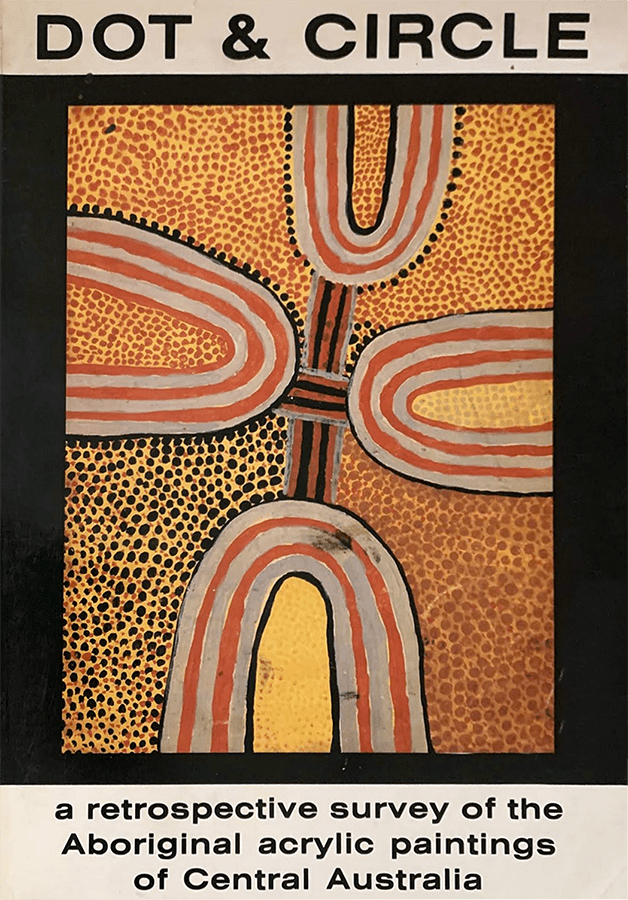
Dot & circle :
a retrospective survey of the Aboriginal acrylic paintings of central Australia
- Auteur : Janet Maughan; Jenny Zimmer; Royal Melbourne Institute of Technology (Australia). Gallery.
- Editeur : Melbourne : Communication Services Unit, Royal Melbourne Institute of Technology, 198
- ISBN: 0864440901 9780864440907
- Notes: « A loan exhibition from the Flinders University of South Australia, first shown at the RMIT Gallery, Melbourne, 16th April-3rd May, 1985. »Spine title: Dot & circle at RMIT.
- Description: 208 pages : illustrations (some color), maps, portraits (some color) ; 30 cm
- Responsabilité: [edited, produced and designed co-operatively by Janet Maughan in Adelaide and Jenny Zimmer in Melbourne].
Résumé:
Detailed illustrated catalogue of exhibited works including interpretive notes on associated symbolism and mythology; includes essays by J. Maughan, R.G Kimber, A. Crocker and P. Hogan separately annotated; papers by R.D. Morice, J.V.S. Megaw and G. Bardon previously annotated.
Streets of Papunya:
The reinvention of Papunya painting -Vivien Johnson
Paperback | Sep 2015 | NewSouth | 9781742232430 | 240pp | 285x240mm | GEN
Some of Australia’s most exciting contemporary art comes from the daughters of the ground-breaking Papunya Tula artists of the 1970s, the founding fathers of the desert art movement. Streets of Papunya is the story of the women painters of Papunya today, rising stars of a new art centre called Papunya Tjupi Arts. Among them are some of the first women in the desert to join the original Papunya art movement, who continue Papunya’s rich history as the birthplace of contemporary Indigenous art. Western Desert art expert Vivien Johnson reveals the whole history of Papunya as a site of art production, from Albert Namatjira’s final paintings, executed in Papunya days before his death in 1959, through Papunya’s glory days of the 1970s and ’80s, the dark time when it was known as ‘carpetbagging capital of the desert’ to its inspirational renaissance, as its leading painters reinvent Papunya painting for the twenty-first century.
‘Read this stunning book, and your heart will soar for the genius of the Papunya story artists, memory makers and keepers of place.’ – Alexis Wright
‘This is the story of a wondrous renaissance: the rebirth of the painting movement where modern Aboriginal art-making began in the early 1970s, and is now flourishing once more – thanks to Vivien Johnson, who has made the advancement of Papunya and its people her life’s great cause.’ – Nicolas Rothwell
Art aborigène – Jouvence millénaire :
Aboriginal art – An immemorial fountain of youth (Français) Broché – 13 juin 2001
- Éditeur : Musée Olympique de Lausanne (13 juin 2001)
- Langue : : Français
- Broché : 166 pages
- ISBN-10 : 9291600423
- ISBN-13 : 978-9291600427
- Poids de l’article : 1.12 kg
- Dimensions : 29.7 x 24 x 1.5 cm
The Art of Clifford Possum Tjapaltjarri
Dr. Vivien Johnson is a senior lecturer in Sociology at Macquarie University.
- Publisher : Craftsman House (January 1, 1996)
- Language: : English
- Hardcover : 192 pages
- ISBN-10 : 9768097450
- ISBN-13 : 978-9768097453
- Item Weight : 2.93 pounds
- Dimensions : 10.5 x 0.75 x 12 inches
At last, The Art of Clifford Possum Tjapaltjarri presents a comprehensive account of the work of this extraordinary artist. Over 60 major paintings, all with detailed annotations and spanning more than two decades of his output, are reproduced in this volume. It makes accessible the development of a master painter of the Anmatyerre tribe, one of the founders and leaders of Western Desert art. The encyclopedic range, depth, conceptual complexity, technical skill and inventiveness represented here will astonish even the keenest admirers of his work. So might the obscure destiny – until now – of such great art in the display and consumption systems of the western art world. In the contemporary medium of acrylic on canvas, Clifford Possum Tjapaltjarri expresses both his custodianship of the ancient Dreaming stories of Aboriginal Central Australia recounted in his paintings, and the inexhaustible freshness and brilliance of his own artistic vision.
Ngintaka
- by Diana James, Elizabeth Tregenza
- Hardcover, 184 pages
- Published by Wakefield Press
- Original Title
- Ngintaka
- ISBN13
- 9781743052921
- Edition Language
- English
Inma as told to Diana James by Ivy Nganyinytja and Andy Tjilari with commentary by Tjilpi Robin Kankapankatja, Teddy Edwards, David Miller, Robert Stevens and Tjilpi Tjulyata. Essays by Diana James, Howard Morphy, Judith Ryan, June Ross, Mike Smith and Janet DeBoos.
The epic songline of Wati Ngintaka, the giant perentie lizard man, is a map for survival that is relevant today. He first sang his song as he travelled the Anangu Pitjantjatjara Yankunytjatjara (APY) Lands, creating waterholes and food sources that Anangu rely on today. Those who follow the song know where to find water and food across a vast area of the South Australian desert.
The Ngintaka story begins and ends in western Pitjantjatjara country. He travels into Yankunytjatjara country, lured by the sound of a superior grindstone, to make it his own. Modern archaeology posits an enormous millstone quarry, Palthirri Pirdi, with its beautiful fine-grained white sandstone, as a possible source for the grindstone Ngintaka coveted.
Anangu tell the story of the Ngintaka through rock art, body paint and ceremony and share the story with a wider audience through acrylic paintings, ceramics, wood carvings, tjanpi grass weaving and film – media of the powerful APY contemporary art movement practised in community art centres across the region.
This book is here because Aboriginal owners and descendants of the Ngintaka wish to pass on his story to their children and grandchildren. The process of its development was a family and community inter-generational celebration – a great time of storytelling and learning. Women prepared seedcakes in the traditional manner while their grandchildren filmed them; young men created massive ceramic sculptures; everyone sang and danced inma and the deeds of Wati Ngintaka were discussed again and again
Papunya Tula – Genesis and Genius
- by Hetti Perkins and Hannah Fink
- ISBN 10: 0734763107
- Publisher: Art Gallery of New South Wales, Alice Springs, Australia
- Publication Date: 2001
Papunya Tula: Genesis and Genius is the first major exhibition of Aboriginal art tracing the phenomena of the Papunya Tula movement from the early 1970s to the present. This exhibition is part of the Gallery’s contribution to the Sydney 2000 Olympic Arts Festival. The Western Desert art movement, which originated in the small community of Papunya, some 250kms west of Alice Springs, has placed Aboriginal art – and, some would say, Australian art – firmly in the international arena. It is appropriate to acknowledge and celebrate this contribution to Australian art at a time when the world’s attention will be drawn to Sydney. Comprising approximately 150 paintings, Papunya Tula: Genesis and Genius will chart the development of this exceptional art movement through its most outstanding works. This story will be told by the period’s leading artists who will each be represented by their key paintings. The paintings in this exhibition have been drawn from major public collections as well as private collections within Australia, Canada, England, Germany, Holland and the United States of America. Papunya Tula Artists was established by a small group of Aboriginal artists in 1971, following the work of school teacher Geoffrey Bardon in encouraging the children at Papunya to create art using the motifs and symbols of their own traditions. This initiative was seized upon by the senior men of the community who firstly painted a mural of the local Honey Ant Dreaming on the school wall and then began making small paintings of their Tjukurrpa (ancestral stories) on any available surface. However, their efforts were initially ignored by the market and the movement experienced difficult times in its first decade.
Edition: First Edition.

